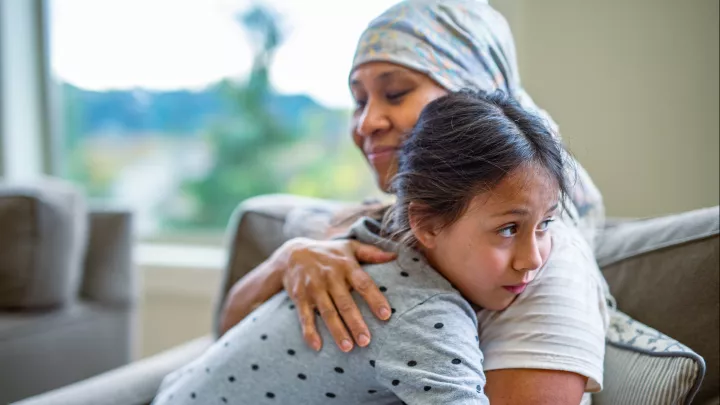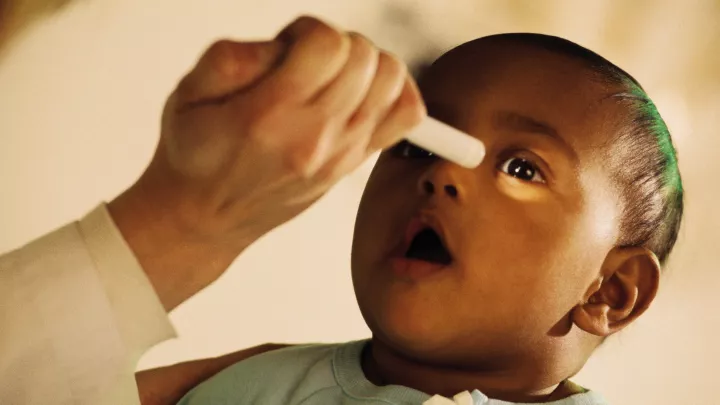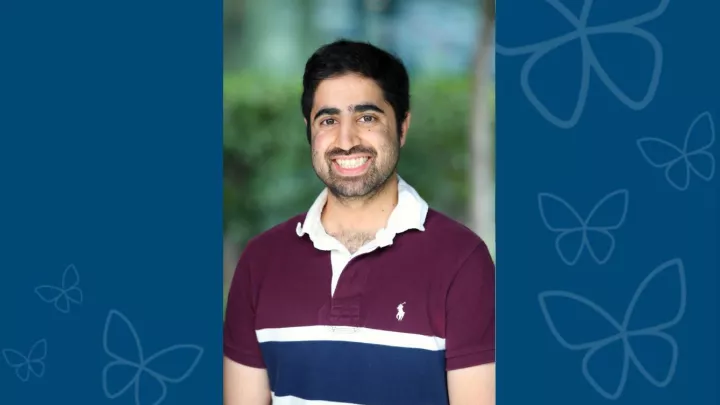Retinoblastoma Program
Few things are as precious as your child’s vision, which makes eye cancers such as retinoblastoma especially concerning. At Children’s Hospital Los Angeles, there’s hope. Our Retinoblastoma Program is a world leader in treating this rare cancer.
Our team developed pioneering techniques that make retinoblastoma treatment safer and more precise. From playing college football to having families of their own, more patients are not only surviving, they’re thriving.
The Retinoblastoma Program: Why Choose Us
The program blends the expertise of pediatric specialists from The Vision Center and the Cancer and Blood Disease Institute. Ophthalmologists and cancer experts work together to provide the best care for your child’s needs.
Your child benefits from a broad range of services that include:
- Liquid biopsies: Diagnosing cancer typically requires a tissue sample (biopsy). But retinoblastoma cells exist in a liquid inside the eye. Our team developed a method for safely taking a sample of this liquid, making it possible to accurately diagnose retinoblastoma.
- Clinical trials: CHLA experts established a retinoblastoma advisory board within the Children’s Oncology Group, the world’s premier pediatric cancer research network. These efforts ensure clinical trials address the most pressing retinoblastoma care challenges. At CHLA, your child has early access to new care methods.
- Access to an ocularist: If it’s necessary to surgically remove an eye, this specialist creates an artificial one that looks similar to the original. The ocularist also ensures that the artificial eye fits comfortably in your child’s eye socket.
- Support: Social workers provide emotional support and help you address challenges related to your child’s care. We also offer additional support services and specialized care that enables your child to stay as healthy as possible after treatment. Explore our Survivorship and Supportive Care Program.
What Is Retinoblastoma?
Retinoblastoma occurs in the retina, the innermost layer of the eye. The retina converts light to nerve signals, enabling your child to see. Retinoblastoma can be passed down in families through a gene mutation.
Having retinoblastoma does not always mean your child will lose an eye or vision. Coming to an experienced program such as the one at CHLA gives your child the best chance for good results.
Our History of Retinoblastoma Program Care Excellence
Our Retinoblastoma Program was established under the direction of renowned pediatric ophthalmologist (eye doctor), A. Linn Murphree, MD. Under Dr. Murphree’s leadership, CHLA made significant contributions to the field. This spirit of innovation lives on through recent scientific discoveries and clinical trials.
Retinoblastoma Research and Innovation
CHLA experts developed retinoblastoma care techniques that are now standard practice all over the world. Our team identified the genetic mutation that causes retinoblastoma, making it possible to detect risks earlier through genetic testing. We also developed the RetCam, an imaging device that enables doctors to assess the retina in ways that were not previously possible.
We continue advancing retinoblastoma treatment through ongoing research. Explore our research and clinical trials.
Contact us
The Cancer and Blood Disease Institute welcomes new patients, referrals and second opinions. Please call us to make an appointment.
- Existing patients: 323-361-4624
- New patients, referrals and second opinions: 323-361-4100


